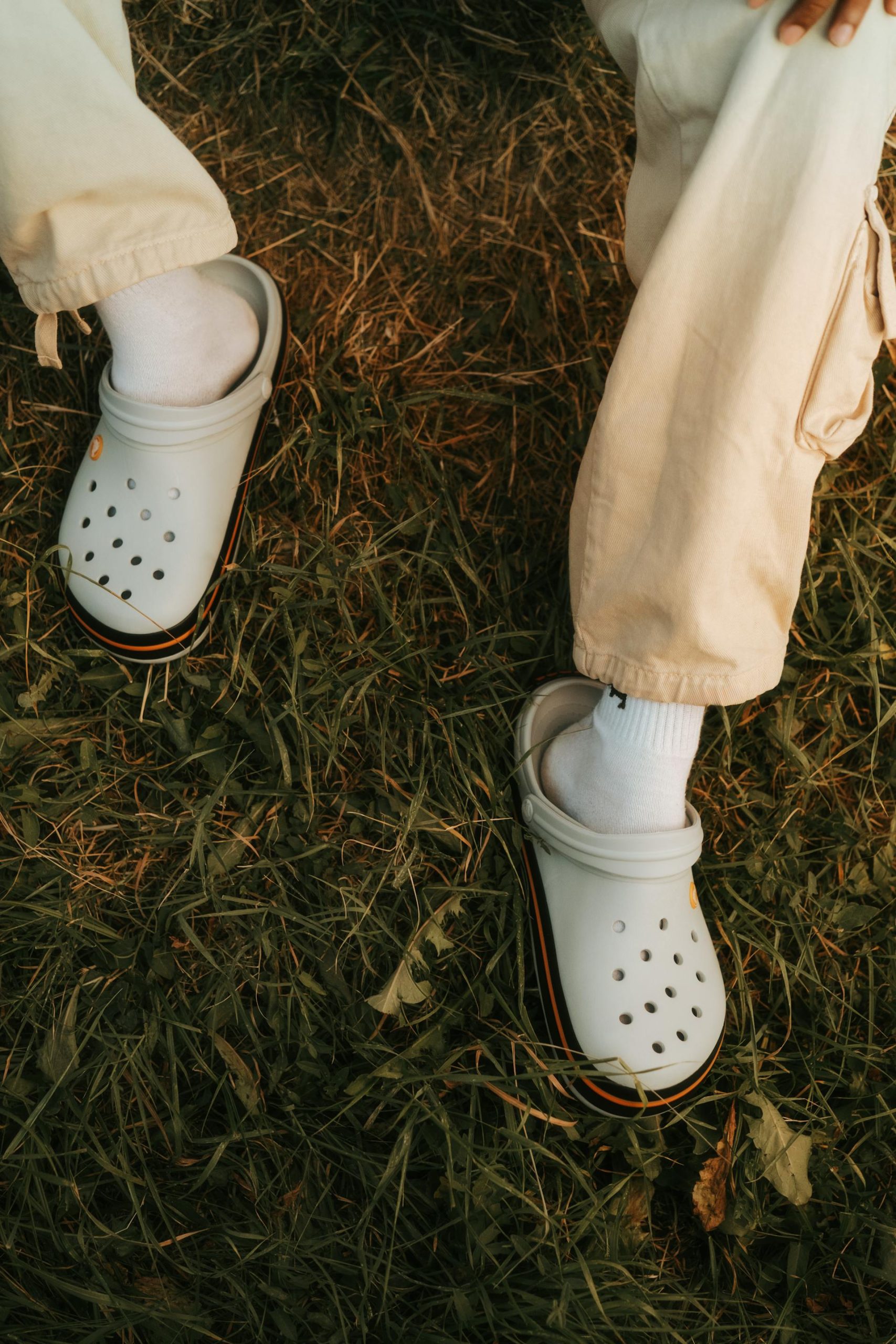Love them or loathe them, Crocs have carved out a peculiar niche in global culture. Floating from hospital corridors to unexpected high-fashion collaborations, those distinctively perforated classic clogs are seemingly everywhere. But for the conscious consumer, particularly those navigating the nuanced world of veganism, a critical question often bubbles up amidst the vibrant colors and undeniable comfort: Are Crocs vegan? It’s a query that probes deeper than a simple yes or no, opening a fascinating window into how a major global shoe brand grapples with ethics, material science, and the tangled demands of sustainable practices within the modern fashion industry. This isn’t merely about footwear; it’s a case study in transparency, corporate responsibility, and the choices underpinning our consumption. So, let’s slice through the marketing chatter, scrutinize the evidence from sole to strap, and deliver a clear, thoroughly researched verdict.
The Official Stance: Crocs’ Vegan Declaration
Let’s address the core issue directly: Yes, Crocs, the company, has officially declared itself a 100% vegan brand. In mid-2021, Crocs made a significant public commitment: by the end of that year (last year relative to the announcement), it pledged to eliminate all animal-derived materials from its product lineup. This isn’t hidden in fine print; it’s readily confirmed across their official communications. Their website FAQs state unequivocally, “Yes, in 2021 Crocs became a 100% vegan brand.” Dedicated sections promote “Crocs Vegan Shoes” and detail their “Comfort for the Planet” initiatives, explicitly reinforcing they are “Still 100% Vegan.”
This pivot wasn’t an isolated gesture. It formed part of a broader strategic initiative to burnish the company’s sustainability credentials, announced alongside an ambitious (though later revised) commitment to become a net-zero company. Company leadership, including Crocs CEO Andrew Rees at the time, framed the transition to entirely vegan materials as simply doing the right thing—a necessary step in diminishing the brand’s overall environmental footprint.
Adding significant credibility to these corporate statements is validation from respected third-party organizations. PETA (People for the Ethical Treatment of Animals) promptly recognized Crocs’ move, bestowing upon the company a Compassionate Business Award in July 2021 for abandoning leather and committing to full vegan status. PETA specifically noted that eliminating animal hides prevents suffering and helps curtail the significant carbon emissions linked to leather production. Following this, Crocs also garnered PETA’s 2022 Libby Award. PETA frequently includes Classic Clogs in guides to vegan footwear and lists Crocs among mainstream retailers offering vegan-friendly options. This external endorsement signals that Crocs’ commitment satisfies the criteria of a leading animal rights authority. The deliberate linking of the vegan transition with their initial net-zero target suggests a calculated strategy: appealing to values-driven consumers by intertwining animal welfare with environmental responsibility goals, such as achieving a low carbon footprint.
Material Matters: Deconstructing Croslite™
The heart and, quite literally, the sole of most Crocs shoes, including the iconic Classic Clogs, is Croslite™. The company labels it a “proprietary closed-cell resin material.” But what does that translate to in practical terms? A peek into the material science reveals Croslite™ is fundamentally a form of EVA foam—ethylene-vinyl acetate. While sometimes positioned in contrast to plastic or rubber, chemically, EVA is a polymer, a type of plastic typically synthesized from fossil fuels like crude oil. It’s a synthetic material through and through.
Critically for our central question, standard Croslite™ contains no animal products. Its components are derived via chemical processes, primarily relying on ethylene and vinyl acetate sourced from petrochemicals. The typical manufacturing process involves injection molding, where molten EVA is shaped. Colorants and any adhesives potentially used in Crocs footwear are also generally synthetic, aligning with the company’s post-2021 pledge to exclude all animal derivatives. The material’s closed-cell structure is integral to its desirable properties: it resists moisture absorption and inhibits microbial growth, contributing to the shoes’ characteristic odor resistance and ease of cleaning.
While Crocs understandably emphasizes the “proprietary” aspect of Croslite™, it’s worth noting that the base material, EVA, is ubiquitous across the shoe industry, especially for cushioning in athletic footwear. The unique “magic” of Croslite™ likely arises less from a fundamentally novel vegan base compound and more from Crocs’ specific formulation and manufacturing process—achieving a particular density, cell structure, and foaming technique yielding its signature lightweight feel, shock absorption, and durability. Its vegan status, therefore, stems from the inherent nature of its synthetic (EVA) origins, not from a specially invented vegan alternative.
The Bio-Based Buzz: Greener Steps or Carefully Worded Claims?
In recent years, Crocs has actively promoted the integration of bio-based materials into its Croslite™ compound, often branding it as “bio-circular Croslite™.” This initiative seeks to reduce the brand’s reliance on fossil fuels by incorporating feedstocks derived from plant-based waste streams. Specifically, Crocs sources repurposed waste such as used cooking oils from the food industry and tall oil, a byproduct of wood pulp processing. This is often achieved through collaborations with material science partners like Dow, leveraging technologies such as Ecolibrium.
Crocs reports substantial progress: as of late 2024, the company stated its Croslite™ portfolio utilizes at least 25% bio-circular content, calculated on an annual average basis (bio-based content). Their stated long-term strategy includes escalating this to 50% by 2030. The primary claimed advantage is a reduction in the environmental footprint of their shoes compared to those made solely with fossil fuel-based Croslite™. Crocs quantifies this, citing a reduction in the carbon footprint of a pair of Classic Clogs compared to their 2021 baseline, attributed to this increased bio-based content.
However, a crucial nuance lies in the accounting method for this bio-based content. Crocs employs a “mass balance” approach, certified by ISCC PLUS. This methodology tracks the total volume of bio-based feedstock entering the complex chemical supply chain and allocates it proportionally to the final products. Critically, this means the 25% figure represents an average across the entire business’s Croslite™ production annually. It does not guarantee that any individual pair of Crocs you purchase contains precisely 25% bio-based material; some might contain more, some less, and theoretically, some could contain negligible amounts, even while the overall system meets the certified threshold.
This use of mass balance accounting is a common feature in scaling sustainable solutions for materials. It’s a pragmatic method enabling companies to increase the use of bio-based feedstocks within intricate industrial processes where direct molecular tracing is impractical. Yet, this approach inherently lacks product-level traceability. This can sow confusion or even perceptions of greenwashing among consumers demanding concrete assurance about the specific item they purchase, as a product marketed with a certain percentage of bio-based content might physically contain far less. Crocs navigates this complexity by carefully framing its claims around the portfolio average, not individual shoes. It underscores a tension between making scalable progress and providing the granular transparency some shoppers desire.
Furthermore, it’s vital to distinguish “bio-based” from “biodegradable.” While bio-based Croslite™ utilizes renewable, plant-derived feedstocks, this does not automatically imply that the resulting shoes will decompose naturally at end-of-life. Traditional Croslite™ (EVA) is famed for durability and resistance to degradation; it is not biodegradable. Available information suggests the bio-based version, while sourced more sustainably, likely retains similar end-of-life properties. The environmental benefit primarily lies in the sourcing phase (reducing fossil fuel dependence and lowering initial carbon emissions), not necessarily in improved biodegradability unless explicitly proven otherwise. Disposal still requires responsible handling, ideally via recycling or re-commerce programs like Crocs’ own take-back scheme.
Beyond Vegan: Crocs’ Broader Sustainability Narrative
Crocs’ embrace of veganism slots into a larger narrative around sustainability, initially anchored by a goal to become a net-zero company. Here, however, the story requires an update. In 2021, Crocs announced a target to achieve net-zero greenhouse gas emissions by 2030. Yet, more recent reports and company communications reveal the net-zero ambitions target date has been pushed back to 2040. This decade-long postponement hasn’t gone unnoticed, with reports suggesting the revision followed Crocs’ acquisition of the HEYDUDE brand, citing the complexities of integrating the expanded business and its associated emissions profile.
While the Net Zero timeline has shifted, Crocs continues to highlight other key initiatives aimed at mitigating its environmental impact. The ‘Old Crocs. New Life.’ take-back program encourages consumers to return worn-out Crocs for donation or recycling, supporting re-commerce programs and aiming towards a circular economy. This even spawned a limited-edition clog incorporating recycled material from collected shoes. The company also points to advances in sustainable packaging, emphasizing minimalist approaches, and internal recycling of Croslite™ production scrap.
Central to their product-level goals remains the target to halve the carbon footprint of the Classic Clog by 2030 (relative to 2021), directly linked to increasing the proportion of lower-impact bio-based Croslite™. Nevertheless, extending the overarching Net Zero goal raises inevitable questions. In an era demanding urgent action on climate change, delaying a major climate commitment by a decade, even with justifications tied to business growth, can appear as a dilution of initial ambition. It suggests corporate objectives might influence environmental action timelines, a point of scrutiny for stakeholders monitoring the fashion industry’s response to the climate crisis.
The Verdict for the Conscious Shopper
Let’s loop back to the fundamental question: Are Crocs vegan? Based on the company’s official policy enacted since late 2021 and corroborated by PETA, the answer is a definitive yes. No leather, wool, or other animal products are deliberately used in their current lines. This is undoubtedly good news for consumers striving to avoid animal exploitation in their fashion choices.
However, as discerning shoppers understand, “vegan” doesn’t automatically equate to being holistically sustainable. Maintaining a balanced perspective is crucial. While Crocs has eliminated animal products, their shoes remain predominantly crafted from a synthetic material (EVA), ultimately derived from fossil fuels, even as the share of bio-based materials grows. The journey to lessen their environmental impact is ongoing, marked by complexities like mass balance accounting for bio-content (affecting transparency) and the significant postponement of their Net Zero target.
Ultimately, the choice rests with you, the consumer. Knowing that Crocs shoes adhere to vegan materials standards allows you to make a decision aligned with that specific ethical principle. Simultaneously, being aware of the material science—that they are a type of plastic foam, albeit one incorporating increasing amounts of plant-derived waste—and the broader context of the company’s sustainability trajectory, including its revised climate goals, empowers a more fully informed decision. The shoe industry is perpetually evolving. Hopefully, continued innovation will yield even more vegan materials that advance both ethical sourcing and environmental responsibility. For the present, you can step into a pair of Crocs assured they are free from animal harm, while keeping a mindful eye on the larger environmental picture.
Read our article on The Best Vegan Sandals: Stylish Summer Footwear.


